Mossariums, vivariums, and terrariums, oh my!
You should make a terrarium! Let me try to convince you.
So much bang for your buck
Part of why terrariums are a great little project is how pleasing it is for how little time/effort/money it requires. You can make one in an hour or two, and probably less if you just wing it. If you want to make a very decent one, you can order supplies off Amazon and have enough to make several. If you want to go really budget, you can watch a few videos, get a jar, and then go outside and grab some stuff.
And in exchange you get this little mini world on your desk! It’s very pleasing to see them develop and change over time. I personally just like to look at mine a few times a day, see how it’s different than the previous day, and watch the isopods crawling around exploring.
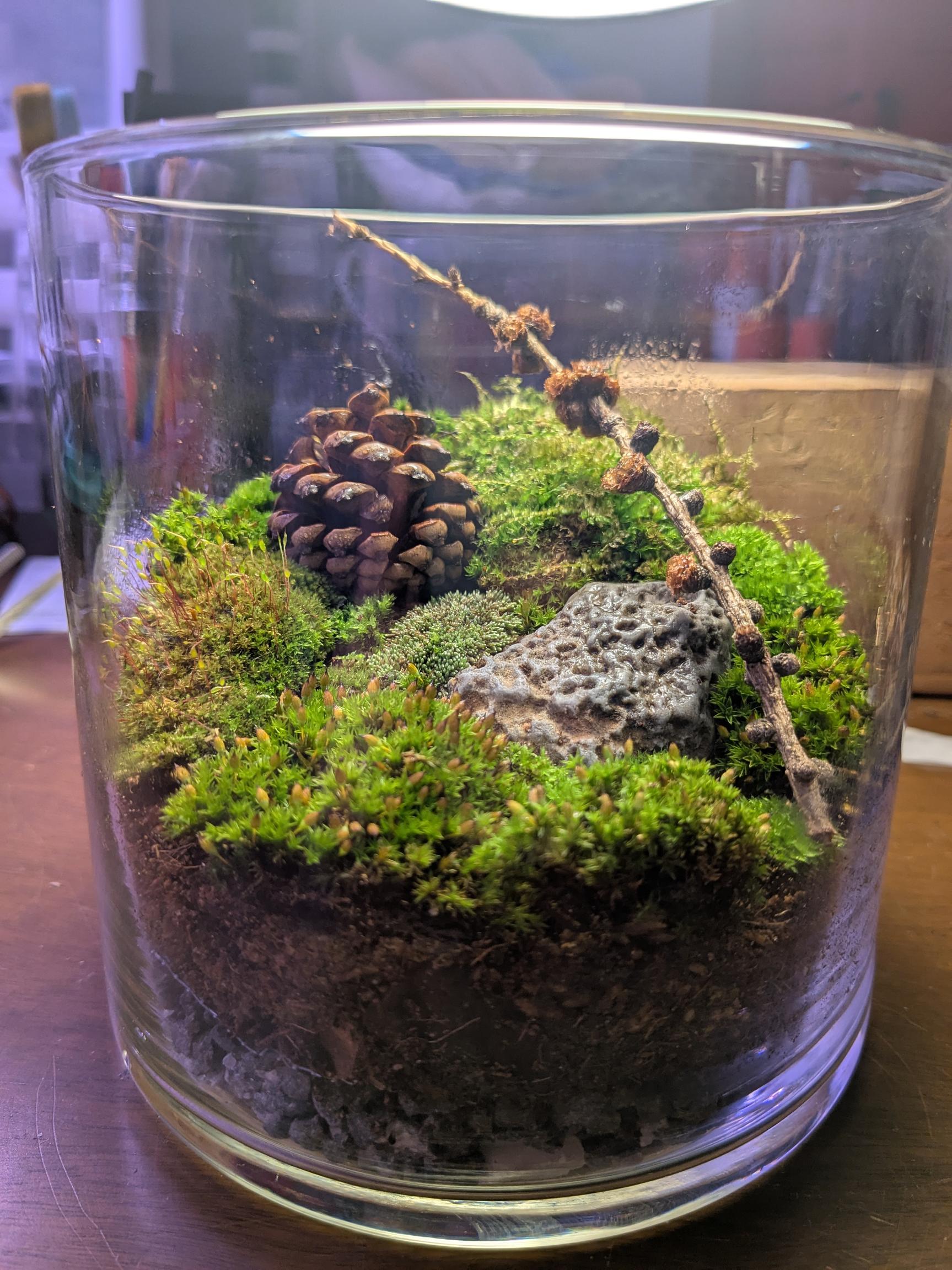
I imagine this is kind of the draw of bonsai trees, but in comparison those seem very “sterile”. My impression is that part of the whole point of them is that they don’t change much over the course of years. I’m sure there’s some zen way you’re supposed to appreciate that but it just doesn’t seem very fun. It seems a bit like the difference between having a dog versus having a nice statue of a dog.
Perfectly low responsibility and nearly impossible to (fully) fail
Another pro of terrariums is how low maintenance they are. You basically seed it with stuff, and then if your container is sealed well enough, you might not have to water it for like six months.
There’s that famous picture I’ve seen floating around online forever, of a British guy who sealed one up and didn’t unseal it for 40 years or something. I found this article on him and he looks exactly like you’d want him to look:
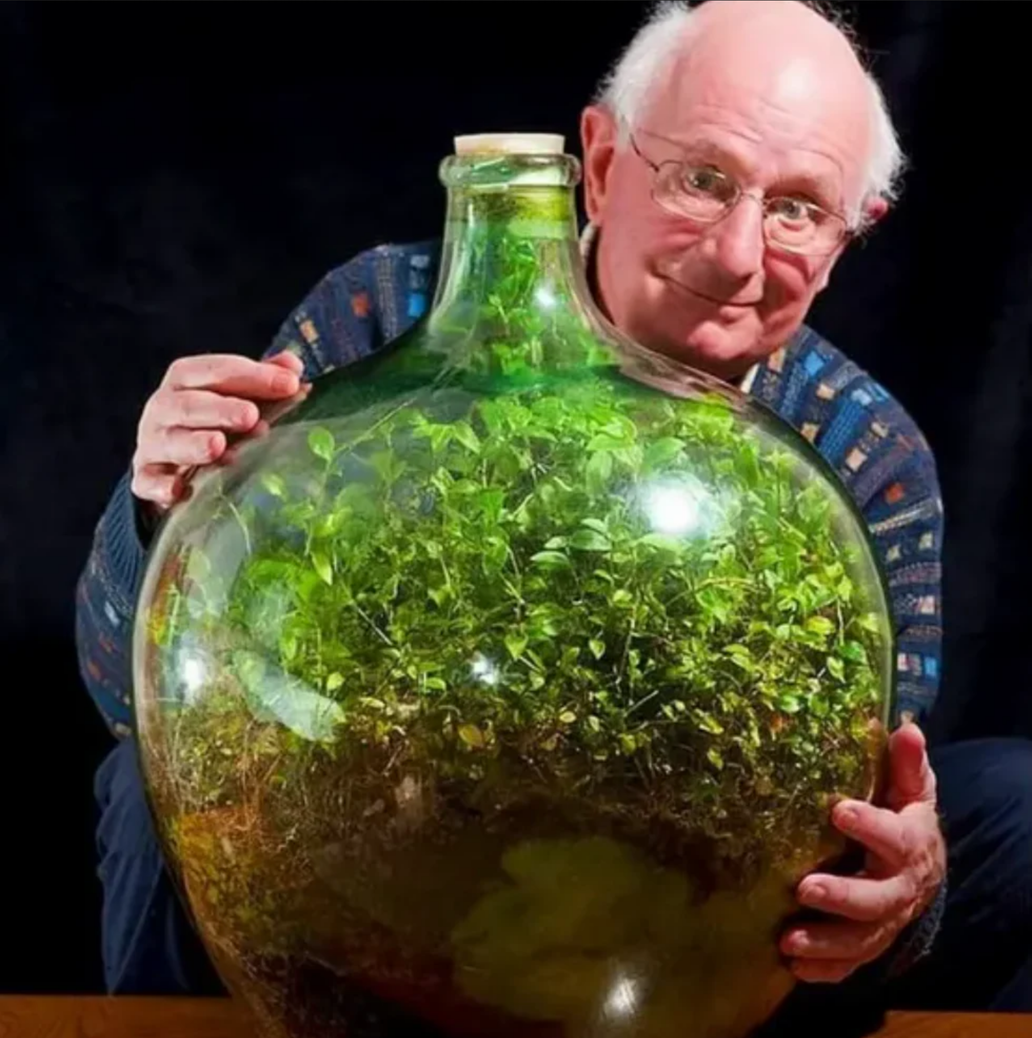
And if you decide to add fauna like insects, well, I’d feel bad if they die, but not that bad. I mean, with most of these, people also get them just to feed to reptiles and amphibians. That said, they are actually kind of charming, and even though my wife was initially a bit grossed out by them, she really likes them now and is excited when they come out.
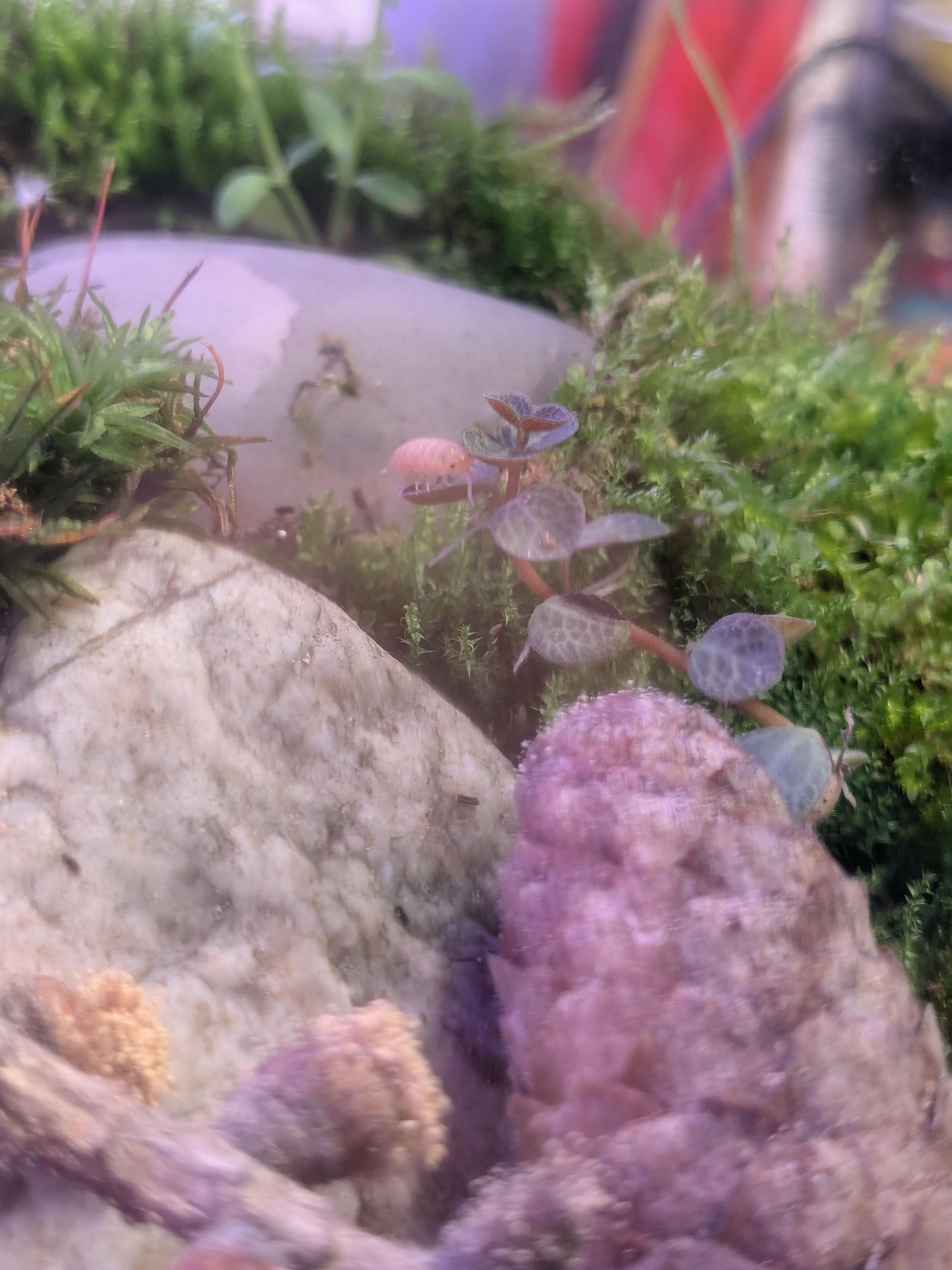
It’s sitting on a leaf!
It’s pretty hard to have a terrarium fail, completely anyway. Lemme explain. If you have a hamster and forget to feed it and it dies, you’ve failed at hamster. Fish are lower maintenance (I think?), but if you forget to feed them they’ll die too. Most houseplants are even lower maintenance, but if you forget to water them they’ll die after a few weeks probably.
But if your terrarium is enclosed and has some light exposure, depending on what you do/don’t do, it may transform in ways you don’t want, but it’ll do something and probably keep on going. It might get overrun with mold, or bugs, or have the plants grow crazy, or have most of the plants die, but it’s unlikely that it’ll totally fail and stop being interesting. You can basically just let it ride and see where the experiment goes.
Maybe another way of putting it is that in failure examples above, the process you care about pretty much stops, whereas it’s unlikely the terrarium will actually stop. If it’s enclosed, the water and nutrients are going to be mostly conserved, and the external energy source from light will let things continue producing.
Gardening? Art? Both!
Terrariums fit into one of those niches that I would say isn’t primarily “art” or a “craft”, but does have a ton of room for being creative. There are a lot of knobs to play with:
- the types of moss
- the types of plants
- fauna (isopods, etc)
- the “hardscape”
- ornaments etc
- the layout
And if you watch even a few of the videos, you’ll quickly see that people make them with very different “vibes”. I’d say one of the biggest choices is a “wild and free” vibe vs a very manicured look. Some people put little mushroom or gnome figurines in theirs but I personally think it looks a bit corny.
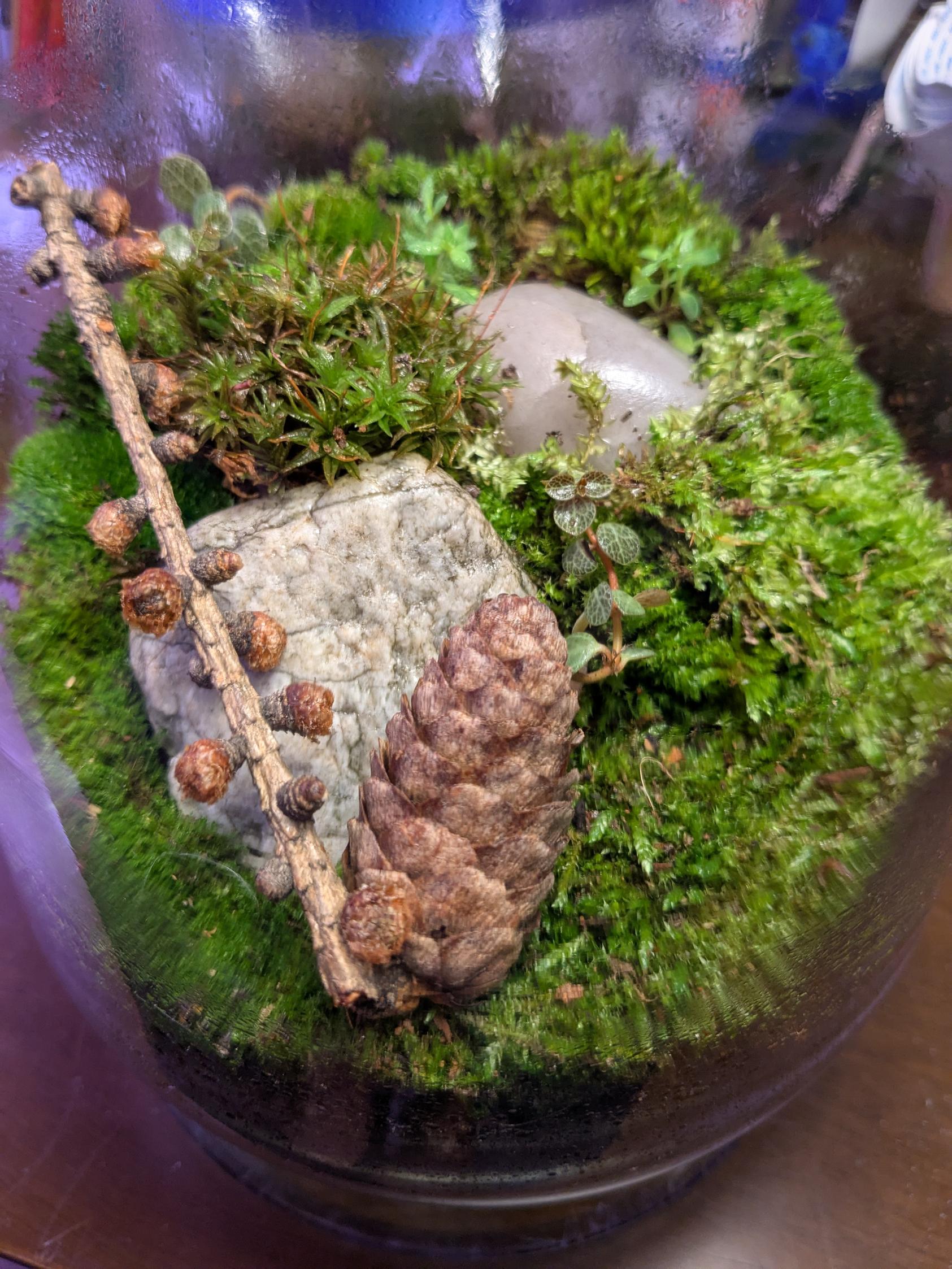
I like to think mine is a bit in the middle, where I placed things initially in an intentional way, but I’m going to mostly let it do what it wants with minor management.
How I made mine
I went to Goodwill and got a few jars that I’m pretty sure were previously big candles, got some rocks and pebbles from outside to make the drainage layer:
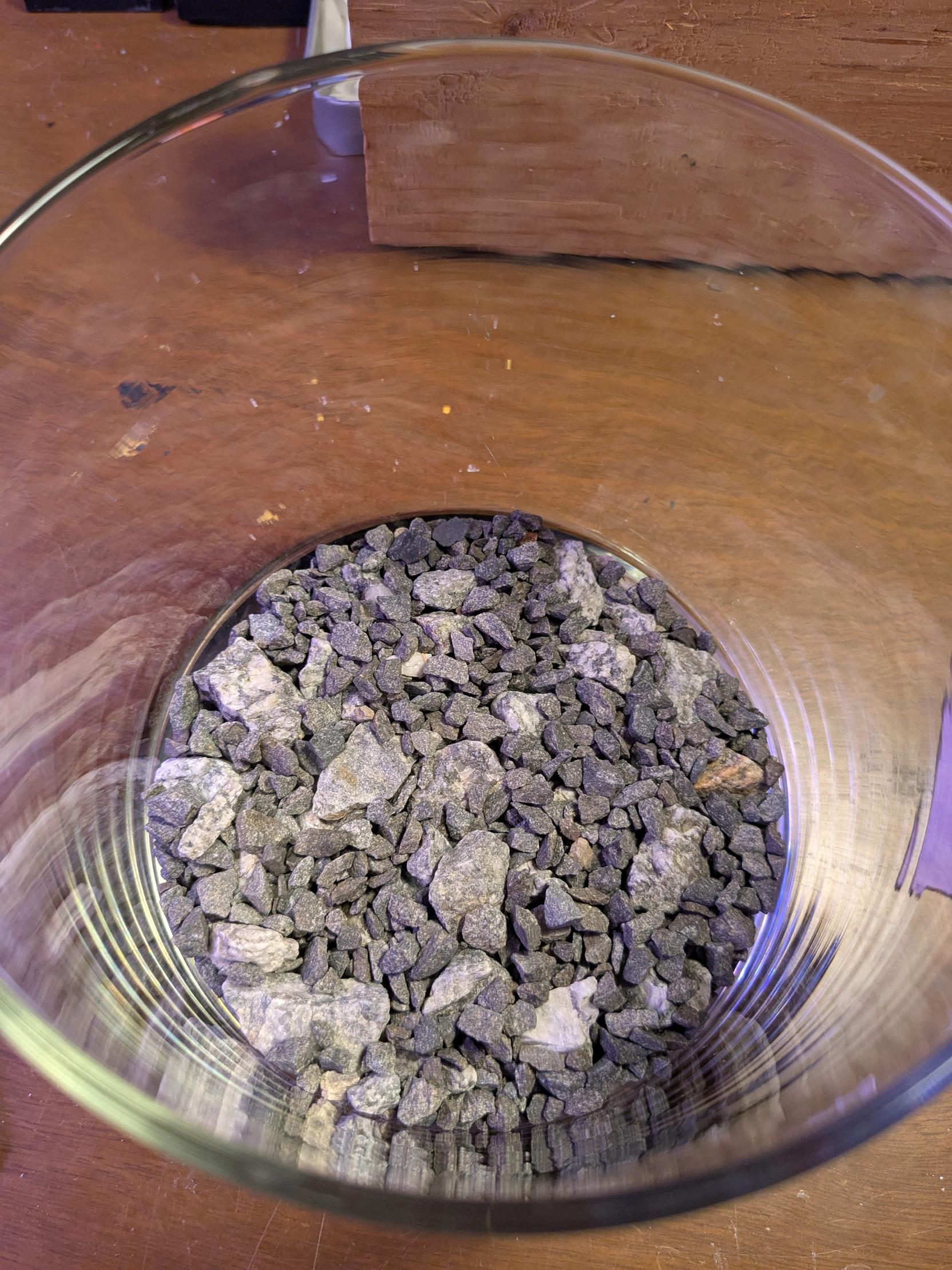
Added window screen to separate it from the substrate:
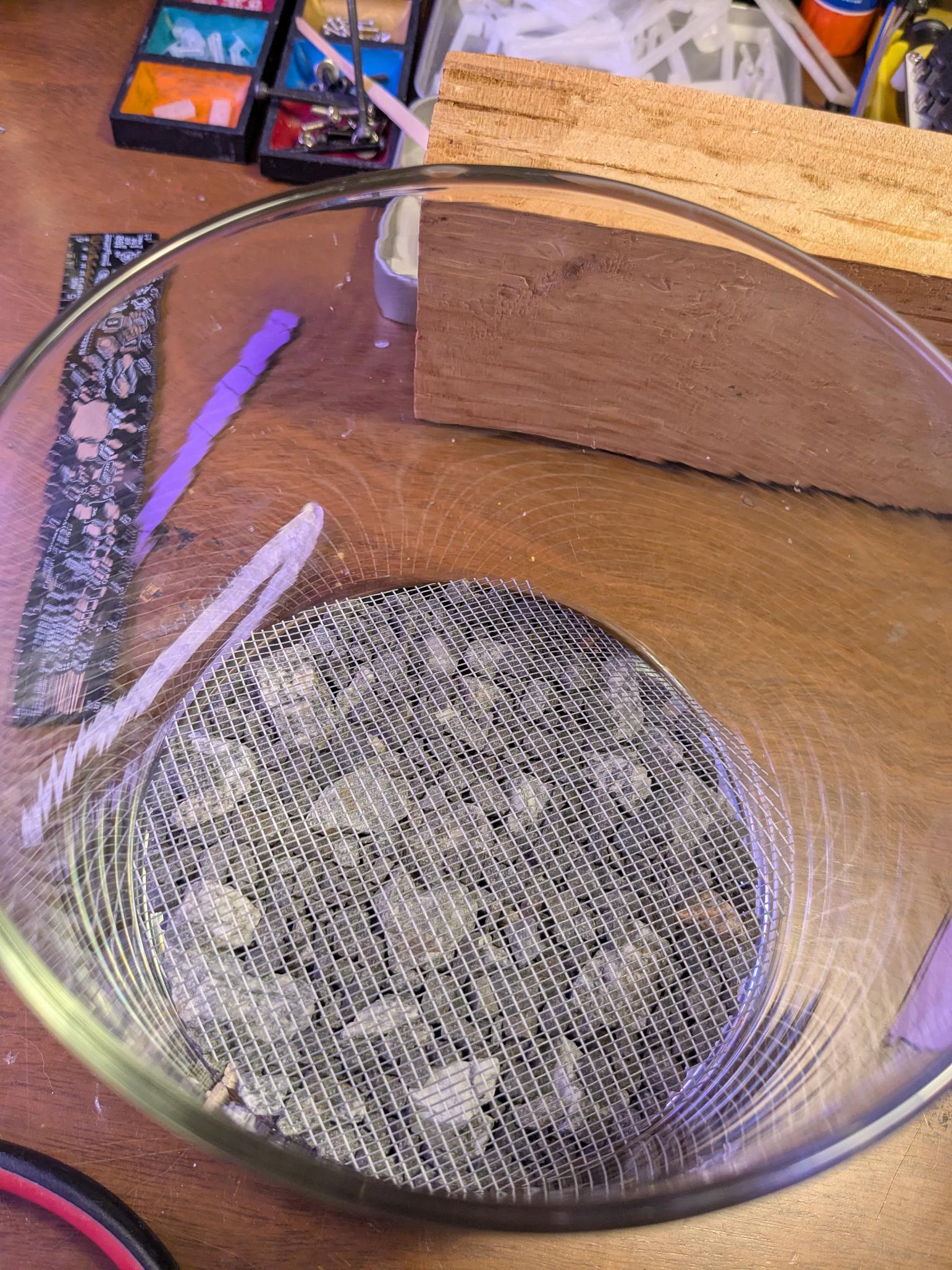
To make the substrate, I followed a video online where he suggests a mix of things. First is coco coir, which is this fibery powder that comes in these pleasing bricks:
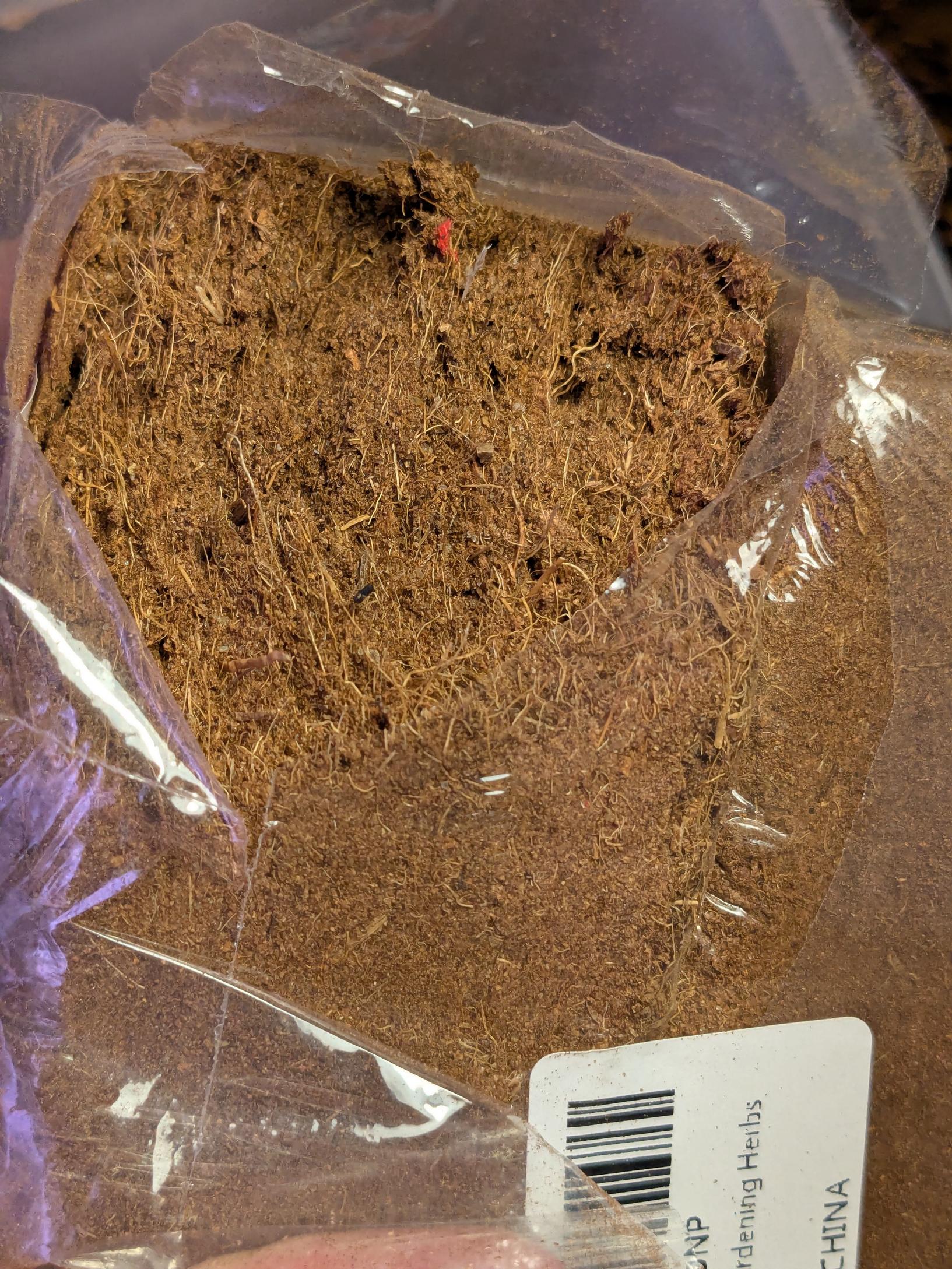
You take a small amount of it and add water to rehydrate it…
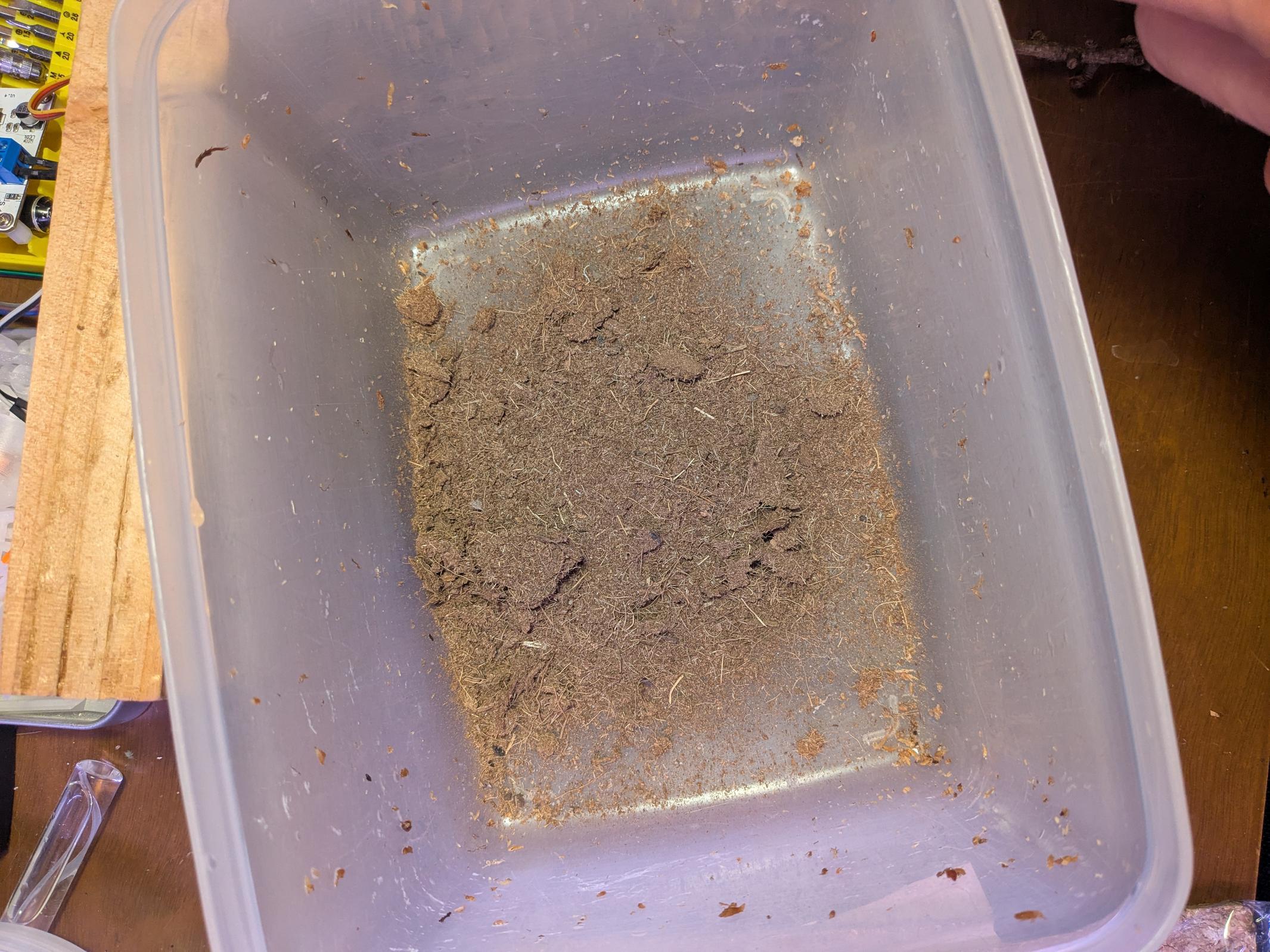
and its volume grows a crazy amount:
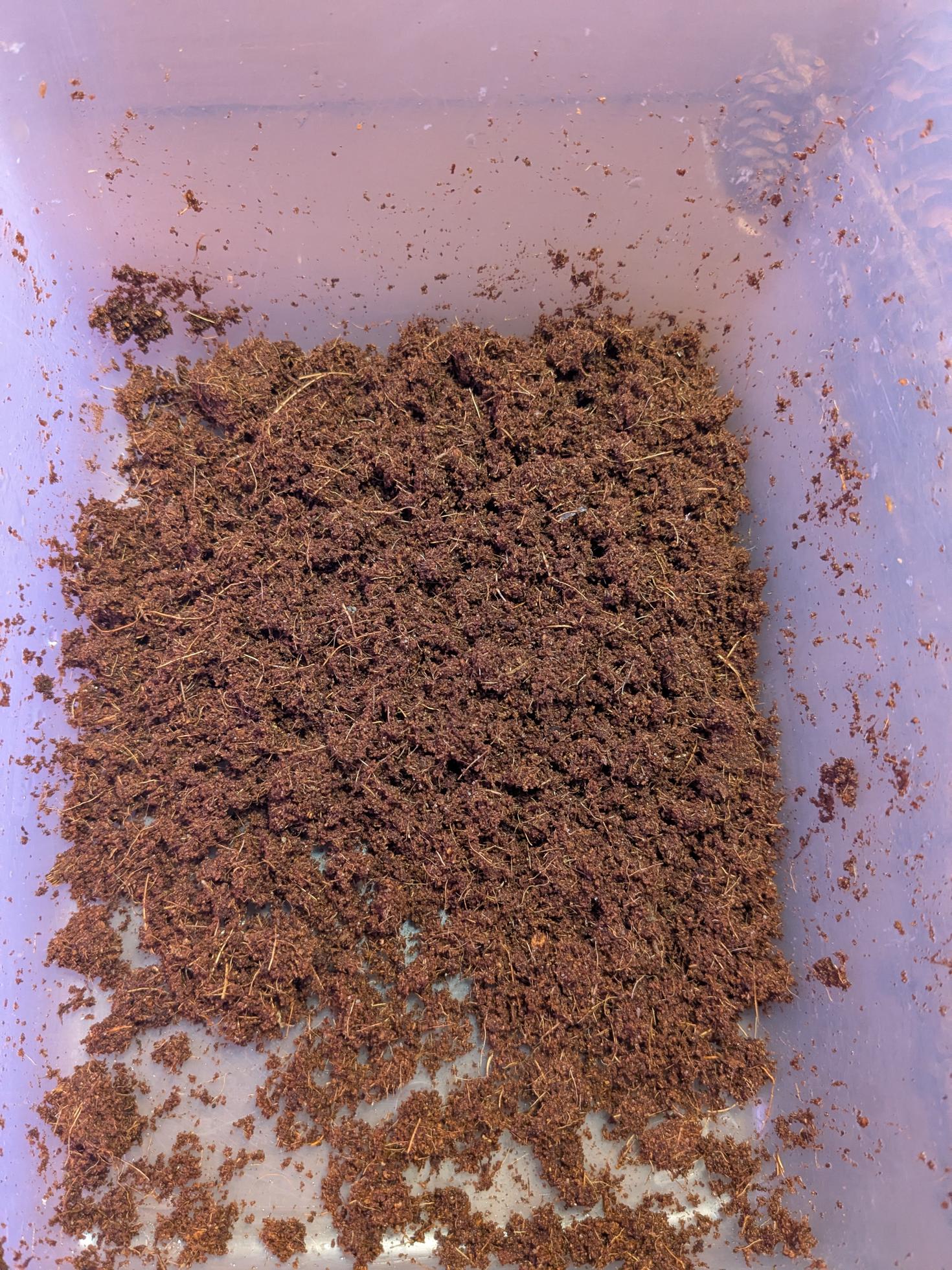
It has a really nice fluffy texture and earthy smell. Similarly, another component is the Sphagnum moss, which is shipped in this thin dry sheet:
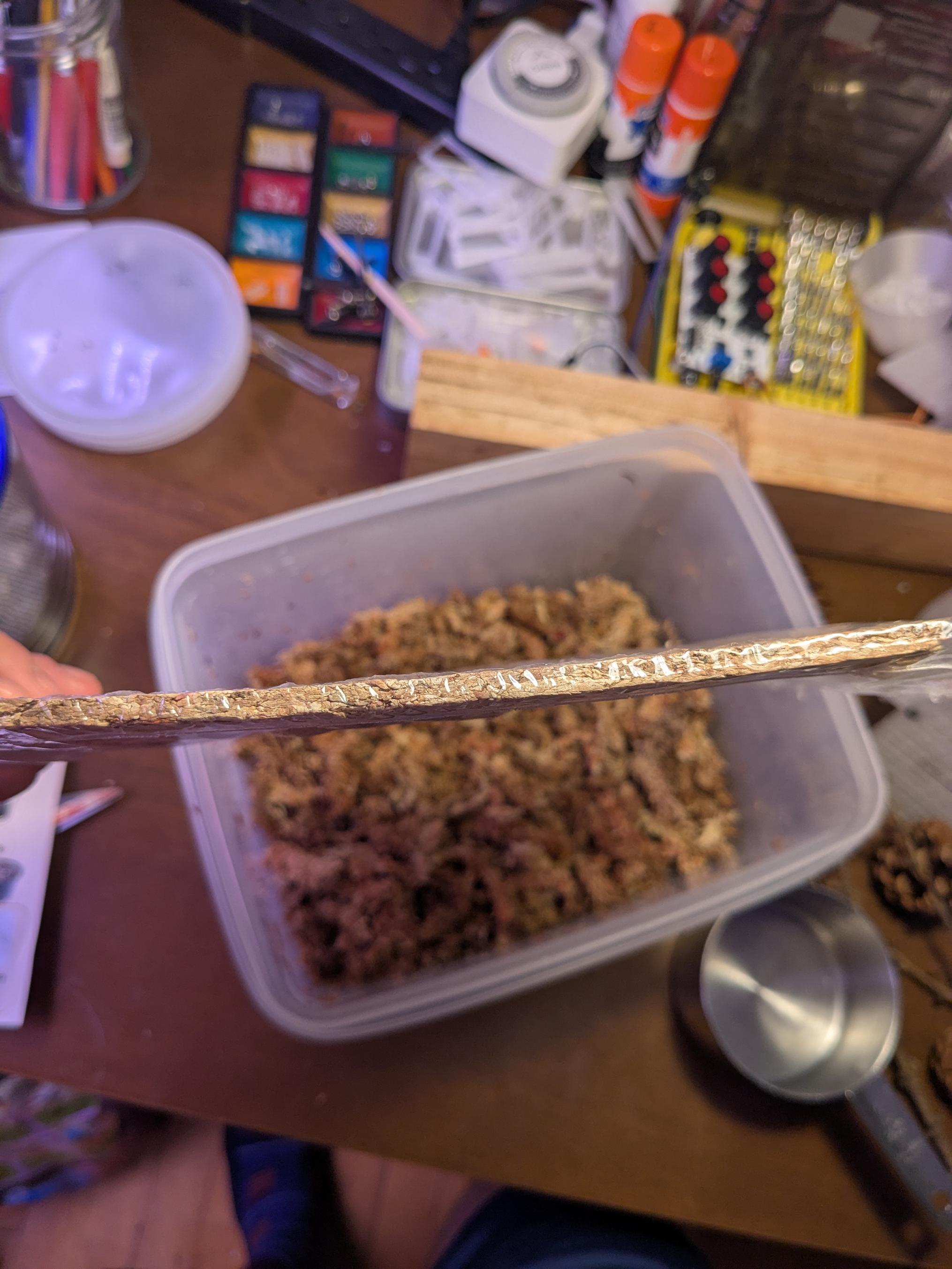
and just a small amount gets rehydrated to become a massive volume!
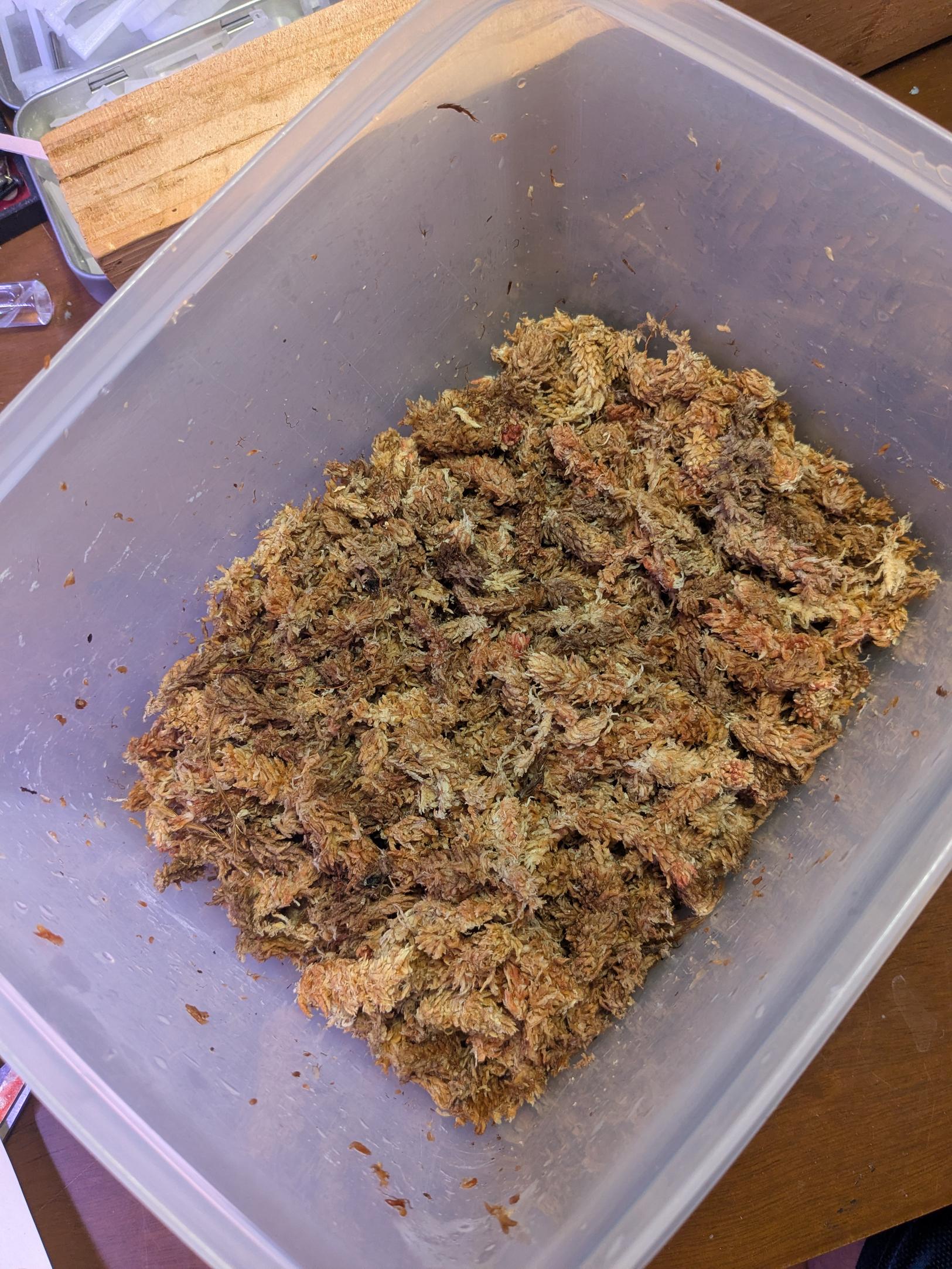
Then there are a few other things, like “worm castings”, orchid bark, and charcoal. You mix it all up and get an absolutely fecund stew:

You add this on top of the drainage layer. I saw a tip to make it somewhat slanted, as it gives the appearance of more depth:
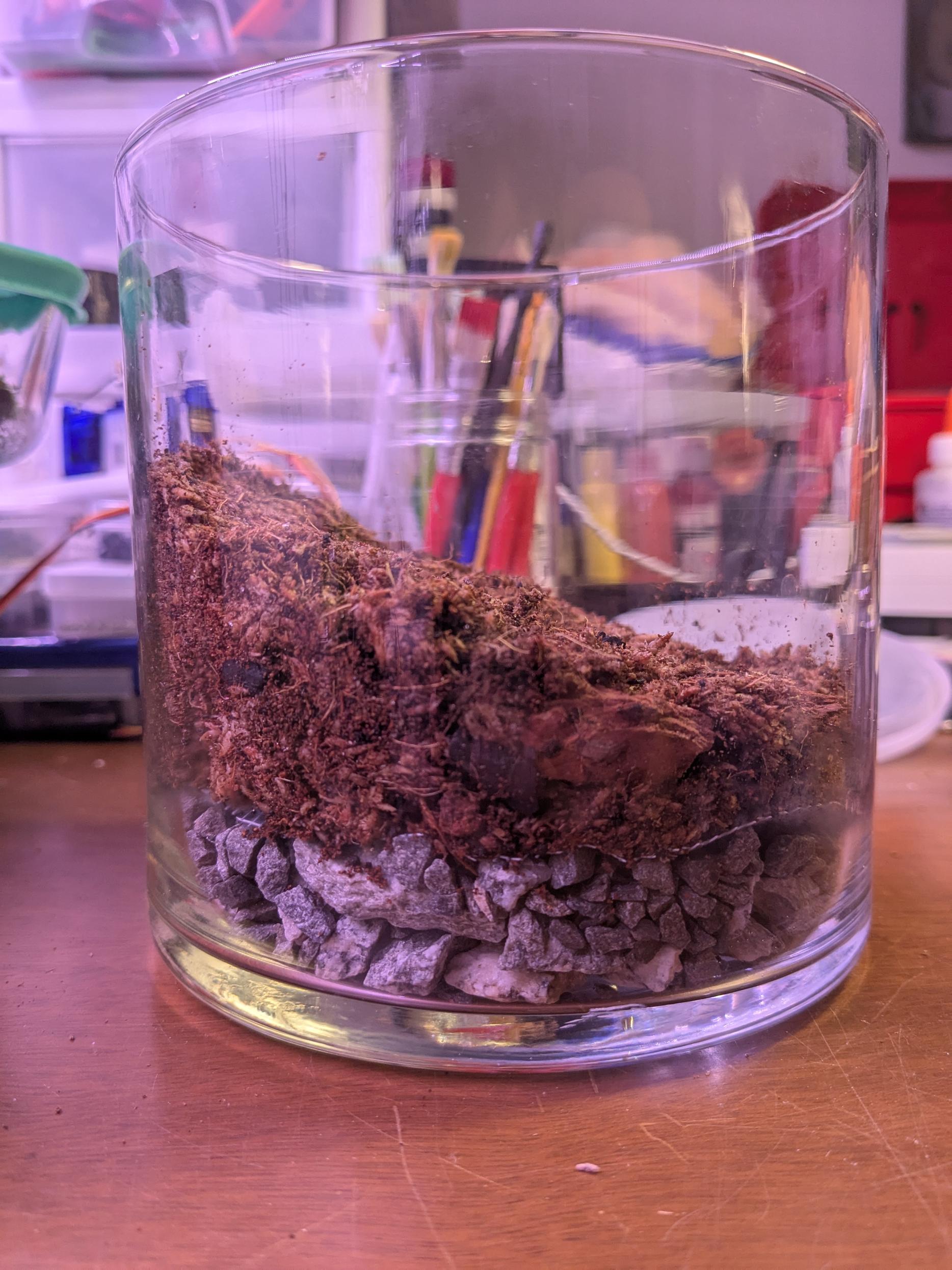
To get some moss, I just went outside to this old garage next to my house that’s covered in it, as well as my backyard, and scraped off a variety of them. Behold my bounty:
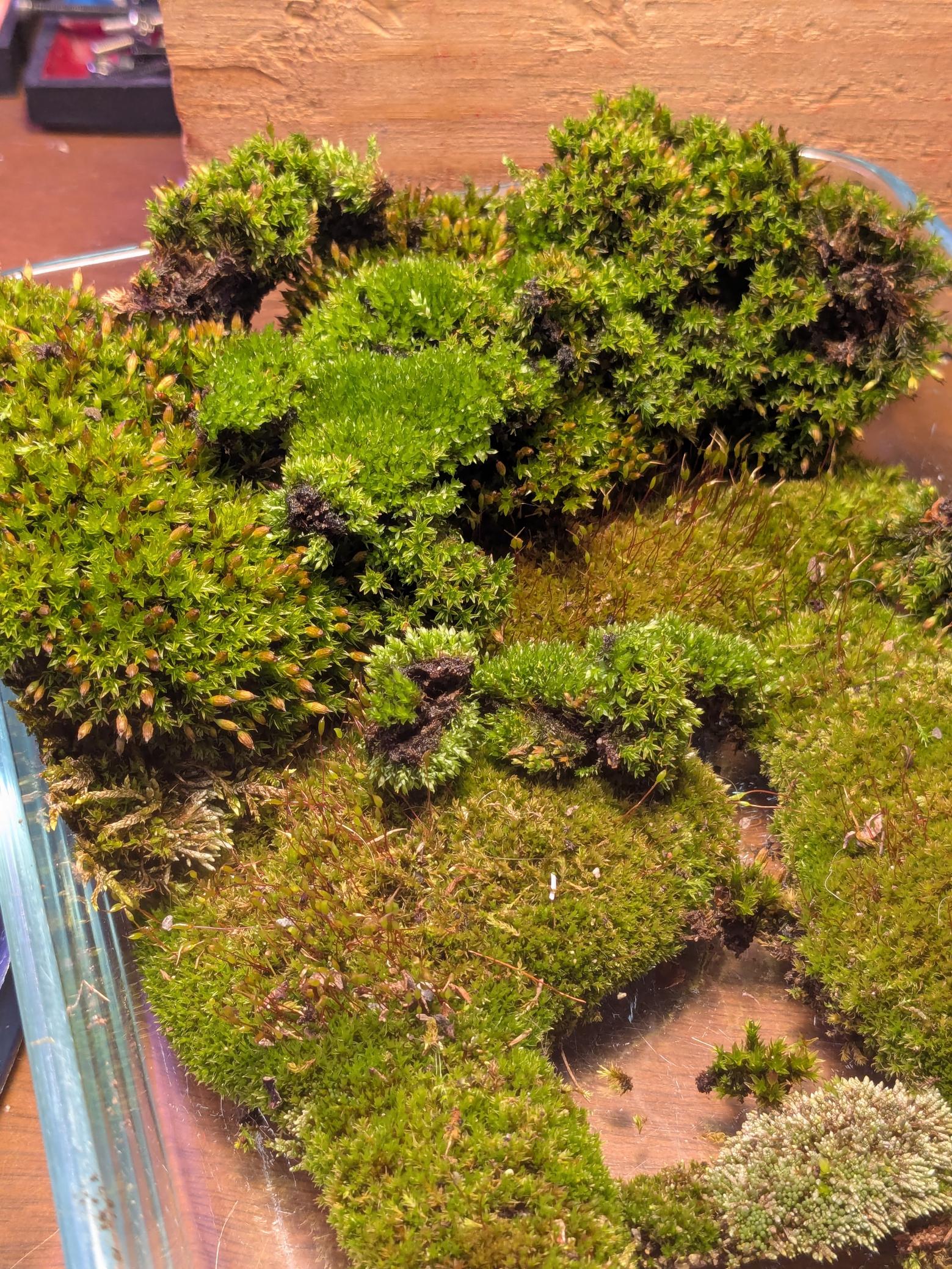
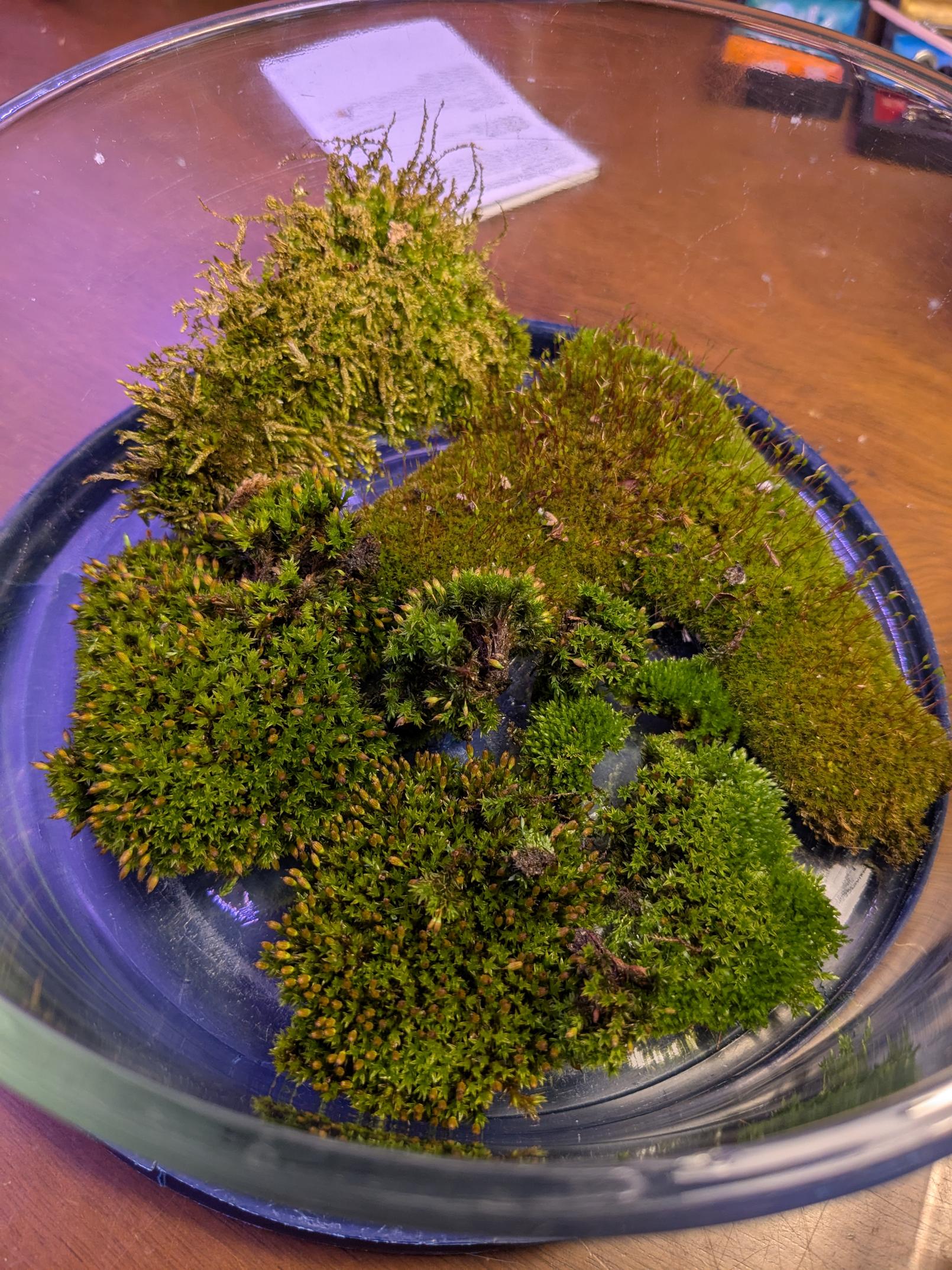
I have this cheapo stereo microscope that lets you see a close up view of the different varieties of moss:
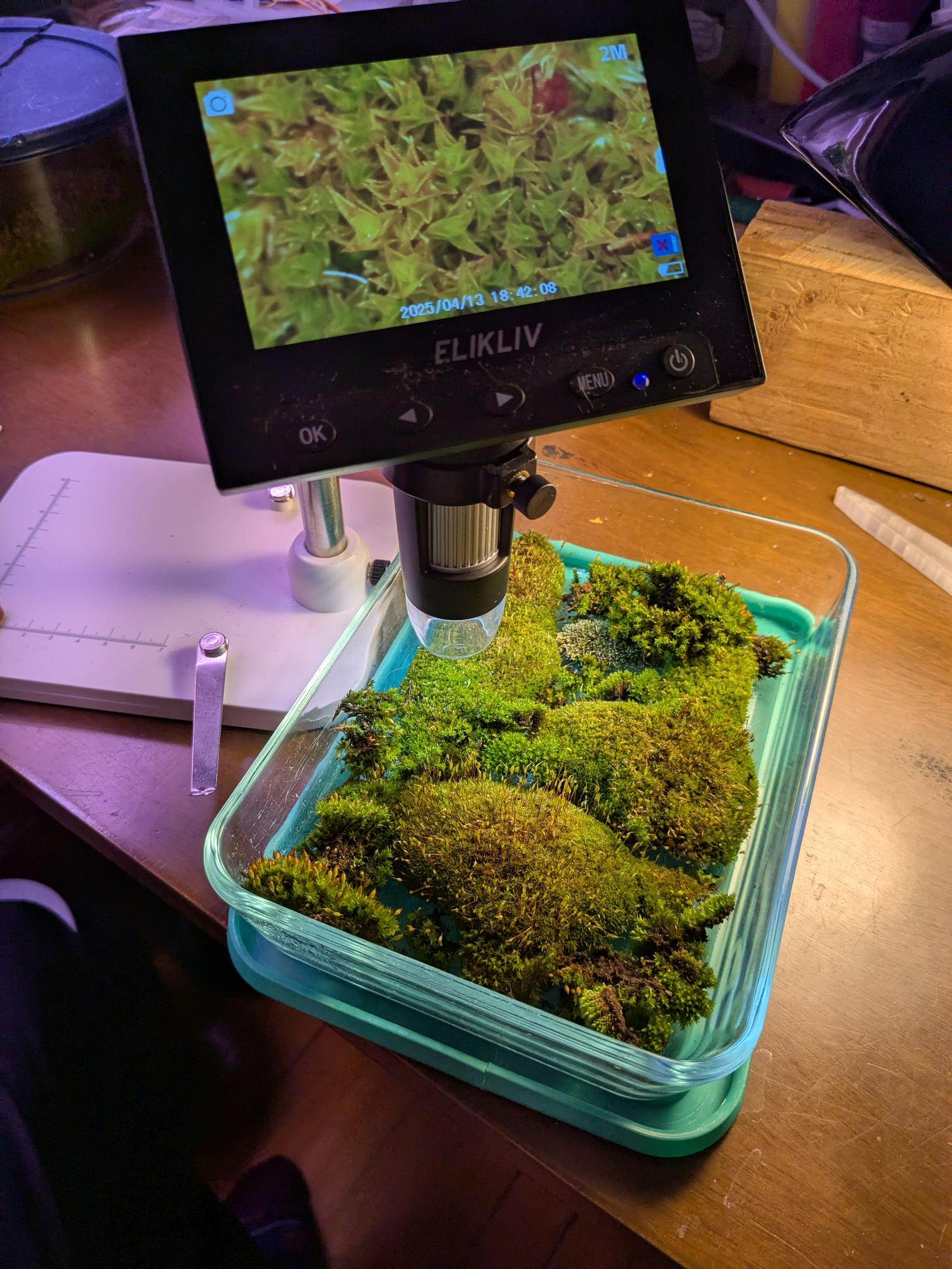
I also foraged for some stuff for the “hardscape”, mostly rocks and pine branches and cones, and baked them to “sterilize” them a bit:
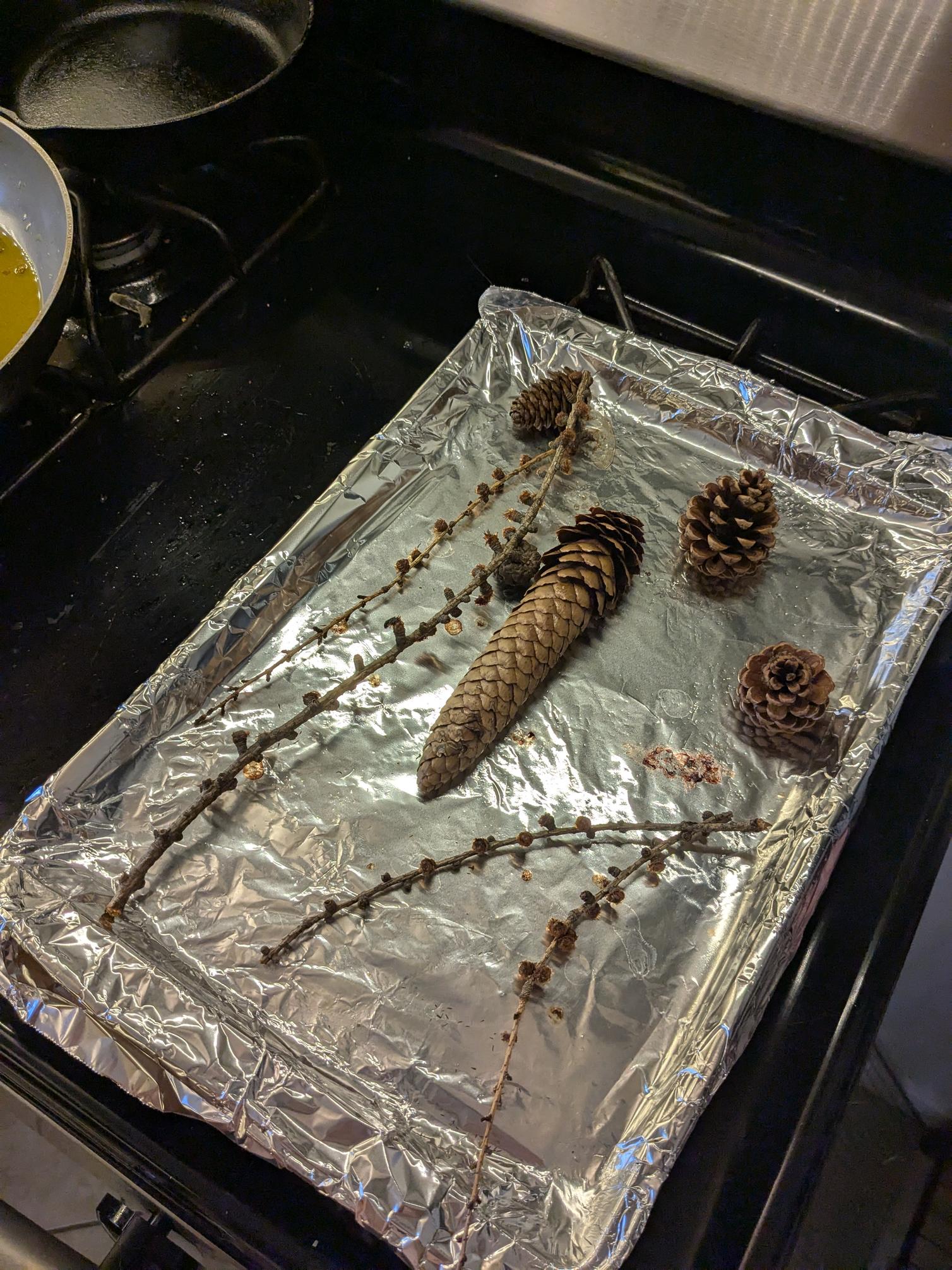
At this point, you basically just place the hardscape and then the moss however you’d like. My friend Will joined us and made his own, since this is definitely up his alley:

I also ordered a few tropical terrarium-compatible plants off the internet for us to add. Ideally they should work well in high moisture environments, and also not grow too aggressively. The most successful is the peperomia (that the isopod in the pic above was sitting on), which has these really pretty variegated leaves:
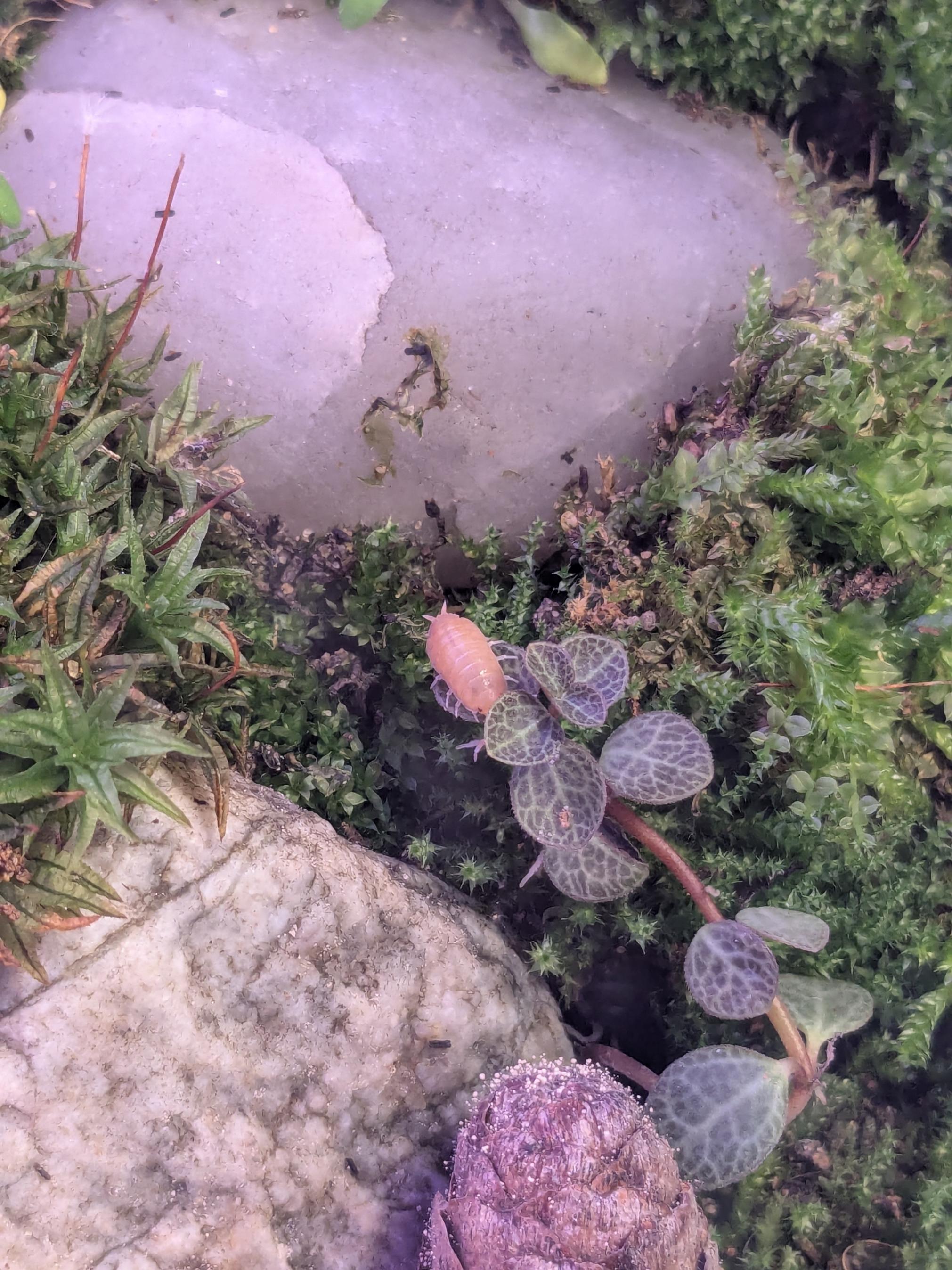
I also added a few random ones I found outside, like these tall ones with the whorled leaf arrangement:
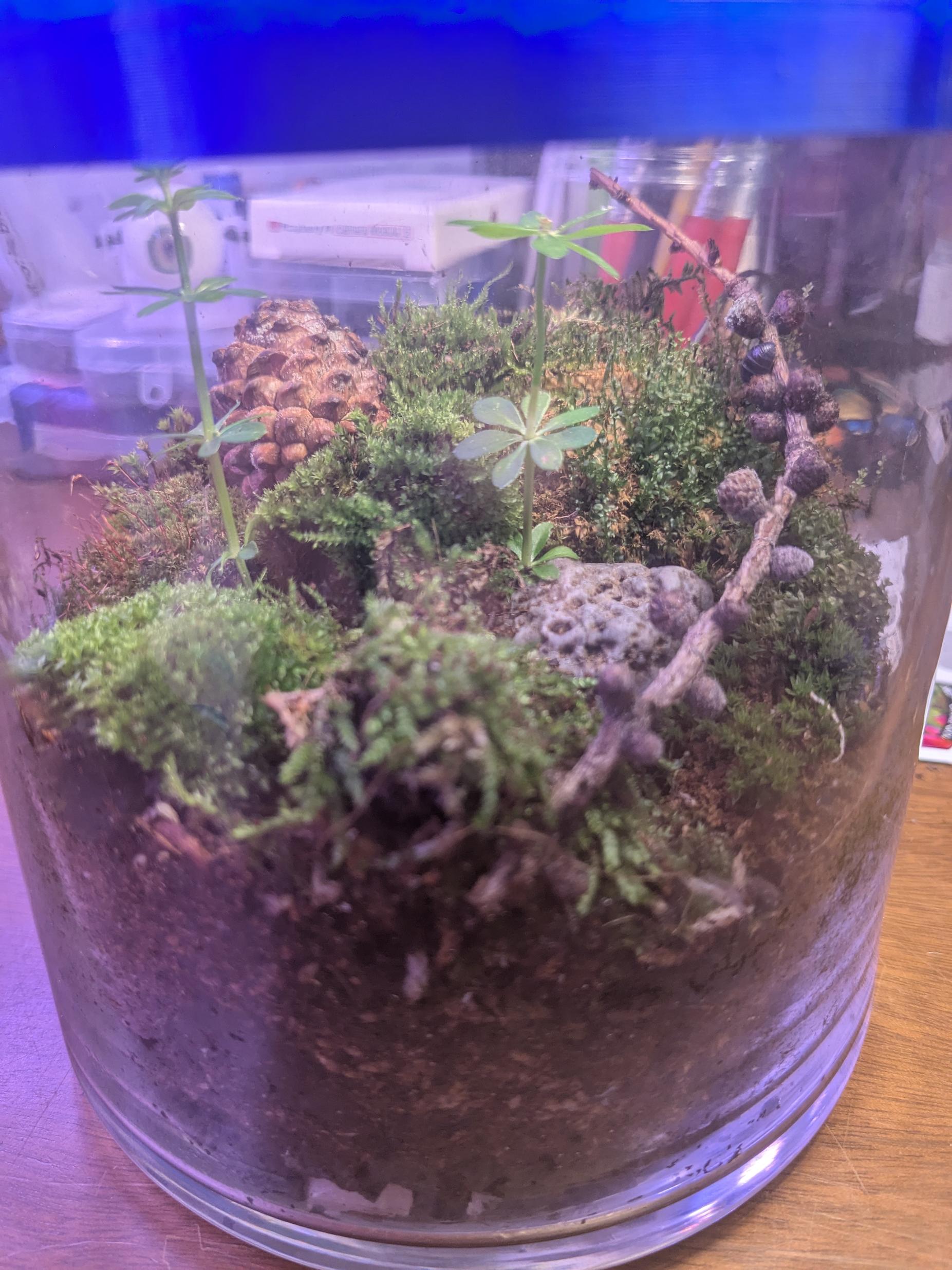
My plant app says they’re “hedge bedstraw”, of the Galium genus? Anyway, they seem to grow very fast, so probably aren’t a great candidate for terrariums in the future (I had to cut off their tops which you can see in a later pic).
People usually want their terrariums enclosed to keep moisture in. Will’s jar came with a clamp lid, but mine didn’t. To make a lid, I just whipped one up in Onshape and 3D printed it:
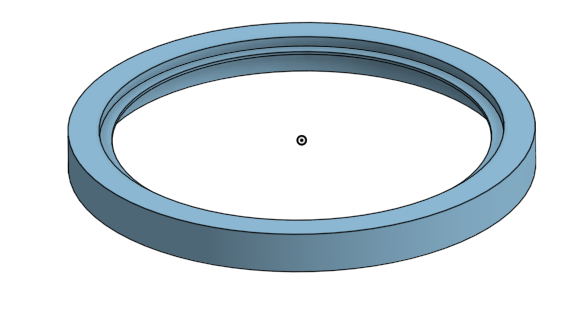
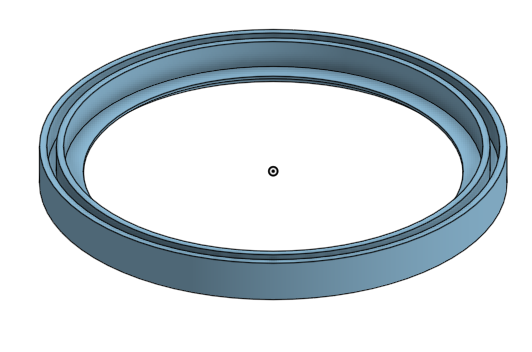
then, cut a circle out of plexiglass, which fits tightly, so there’s a nice window for light and viewing that doesn’t let much moisture out:
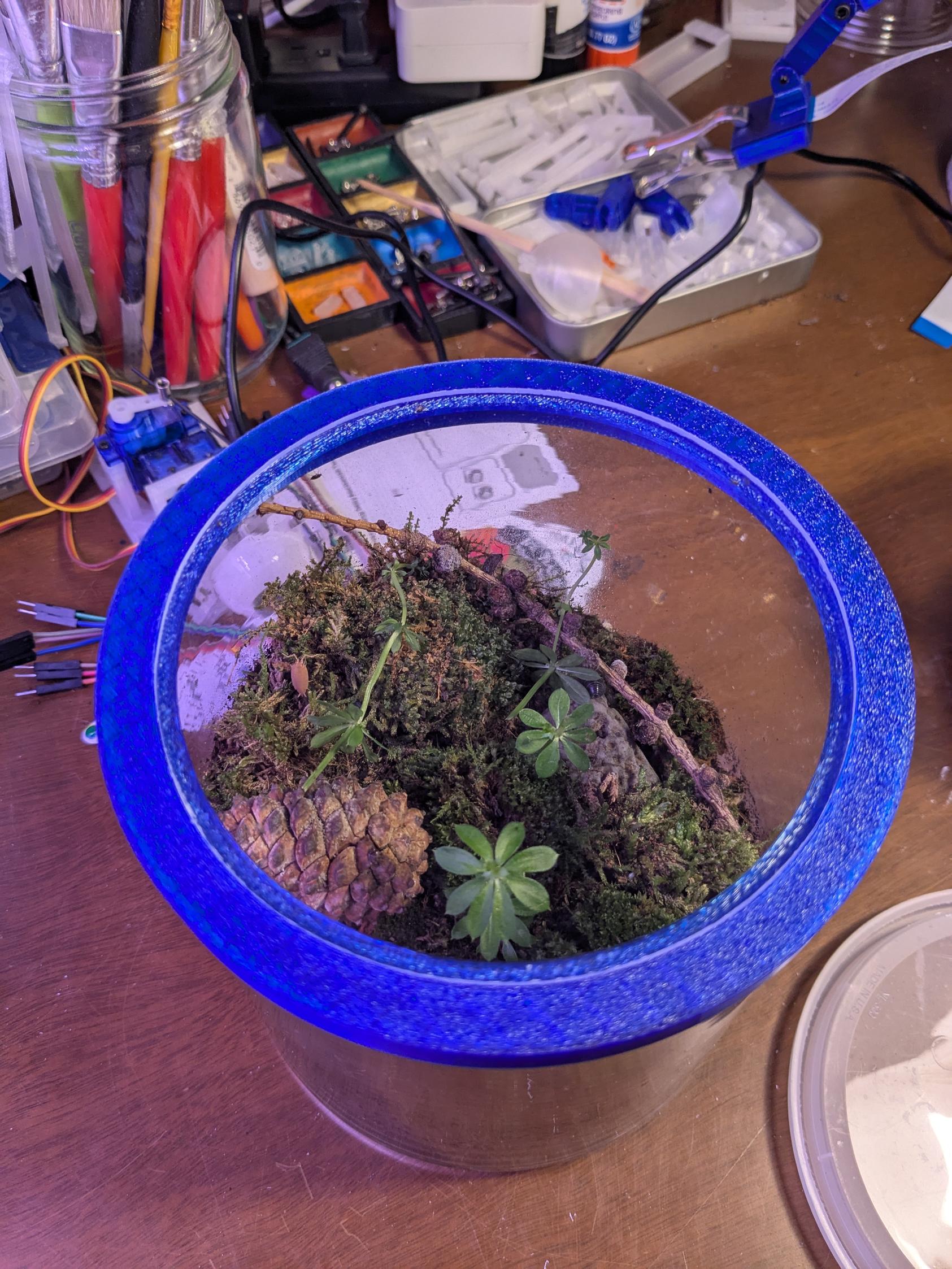
Anyway, the final product looks like these (first is the first one I made, second is the one I made with the others):
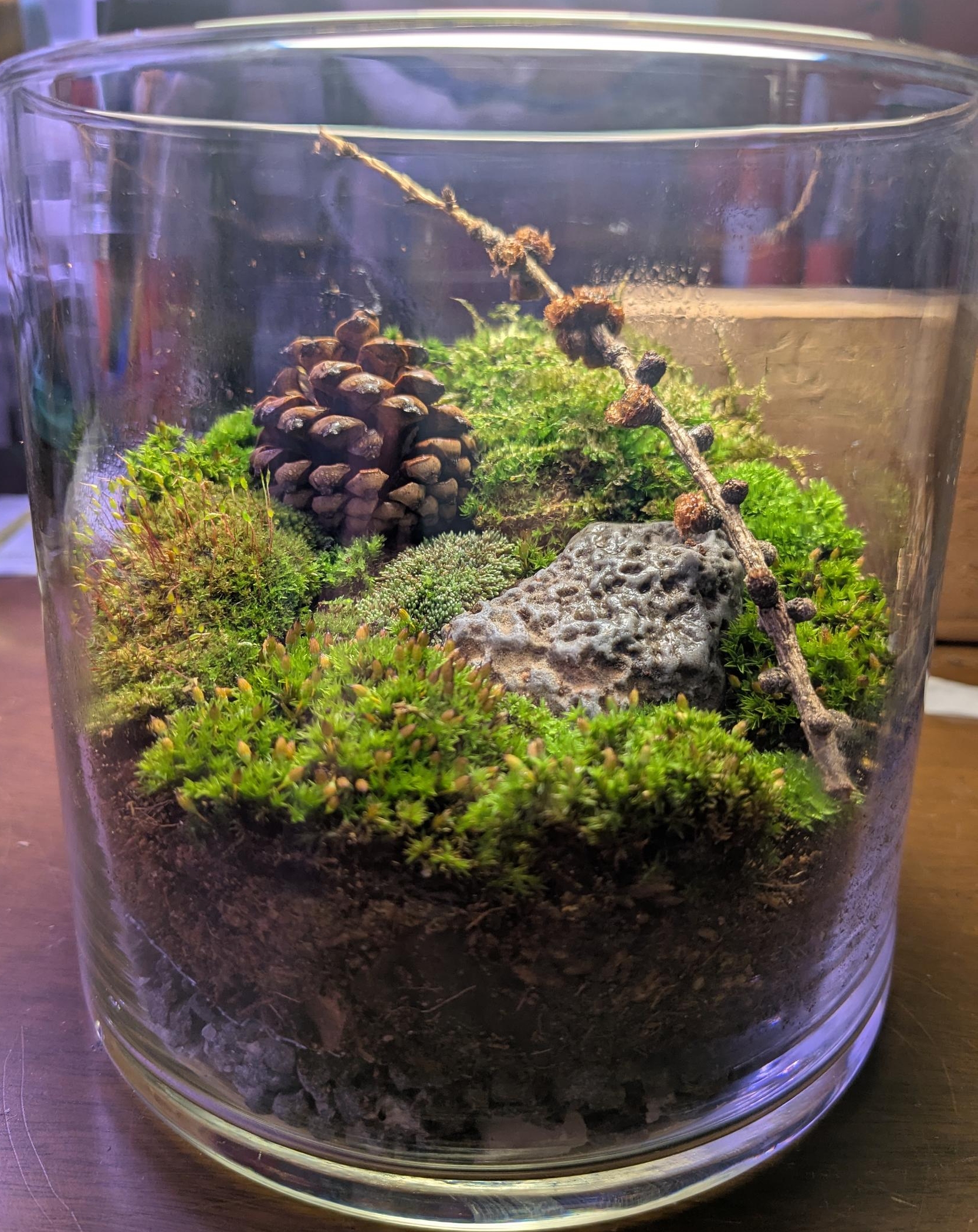
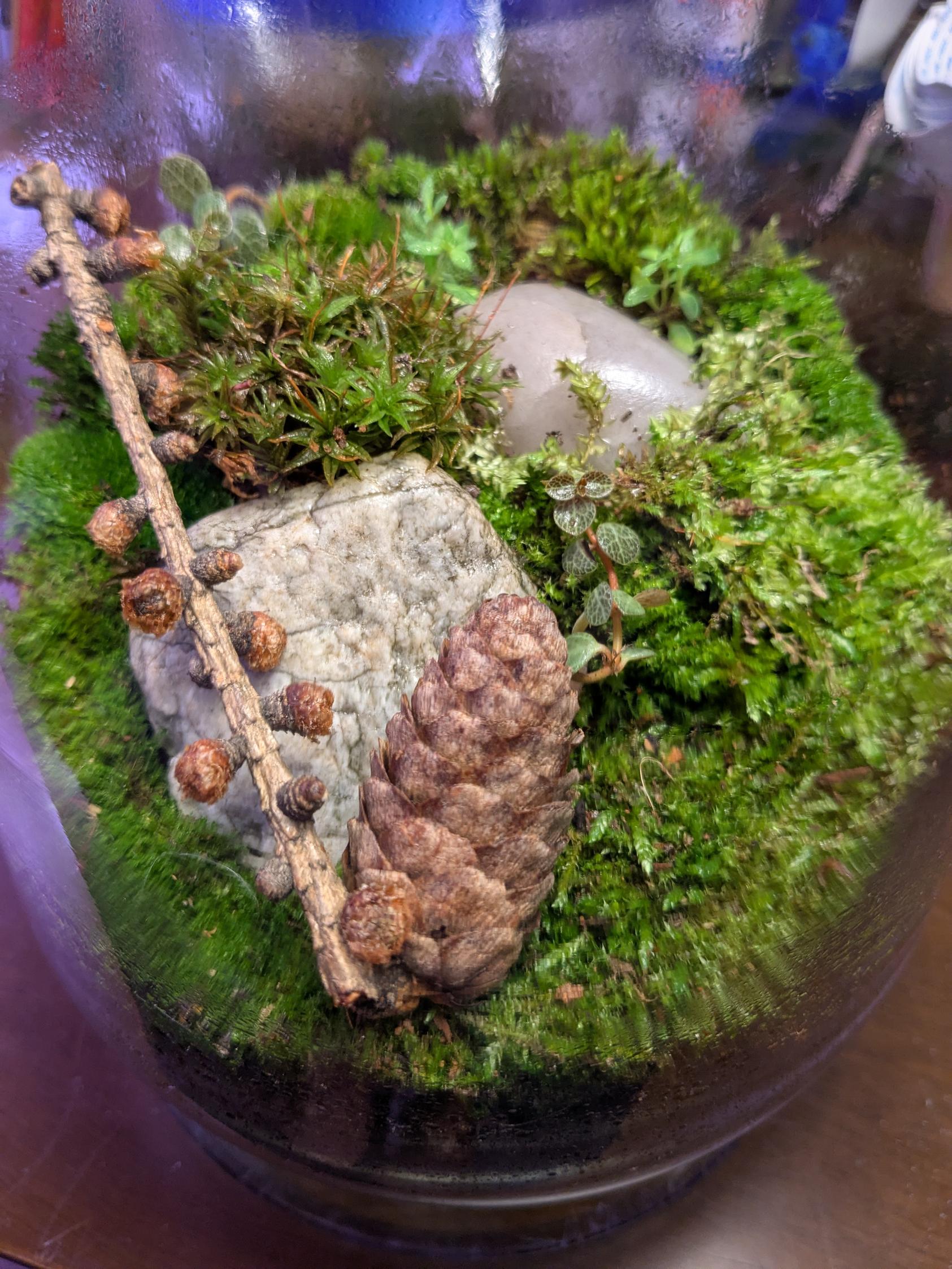
(it’s a bit blurry because I just gave it a misting and some is on the sides.)
Isopods and critters
Lastly, let’s talk critters. I think you can probably get away with not having any, but pretty much everyone online will tell you that you’ve gotta pick up some springtails. The reason is that they’re detritivores, meaning they eat decaying organic matter. You definitely want this for a health terrarium, since otherwise you’ll just have things dying over time, and nothing to process it back into useful nutrients.
Most people at least get springtails and many get isopods, forming what people call a CUC, for “clean up crew”. You can find springtails outside by looking under wet leaves, but it’s much easier just to order some online; there are many sources and they’re quite cheap. You won’t really get to see the springtails much as they’re quite small, but isopods are bigger and lots of fun to watch moving around. I got some from the strange reptile man at our local pet shop. He just scooped them into a bag for me:
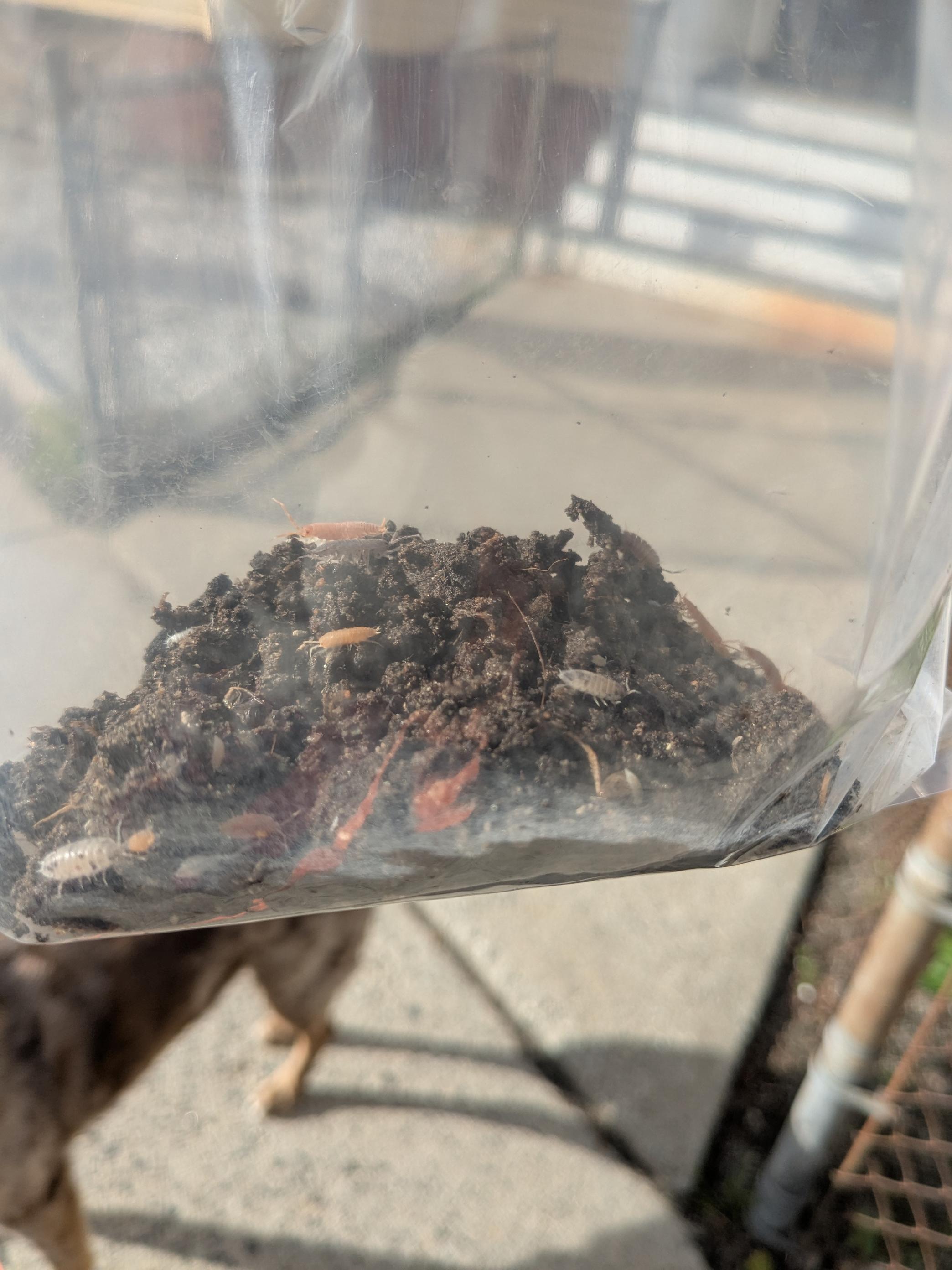
You can see two common species in there, “Spanish orange” and “dairy cows”. However, I also went outside and found some under some logs, like the more classic gray “roly poly” ones (genus Armadillidium… like an armadillo…get it?) you might’ve played with as a kid.
They seem to all get along and not bother each other. Look at those lil buddies!
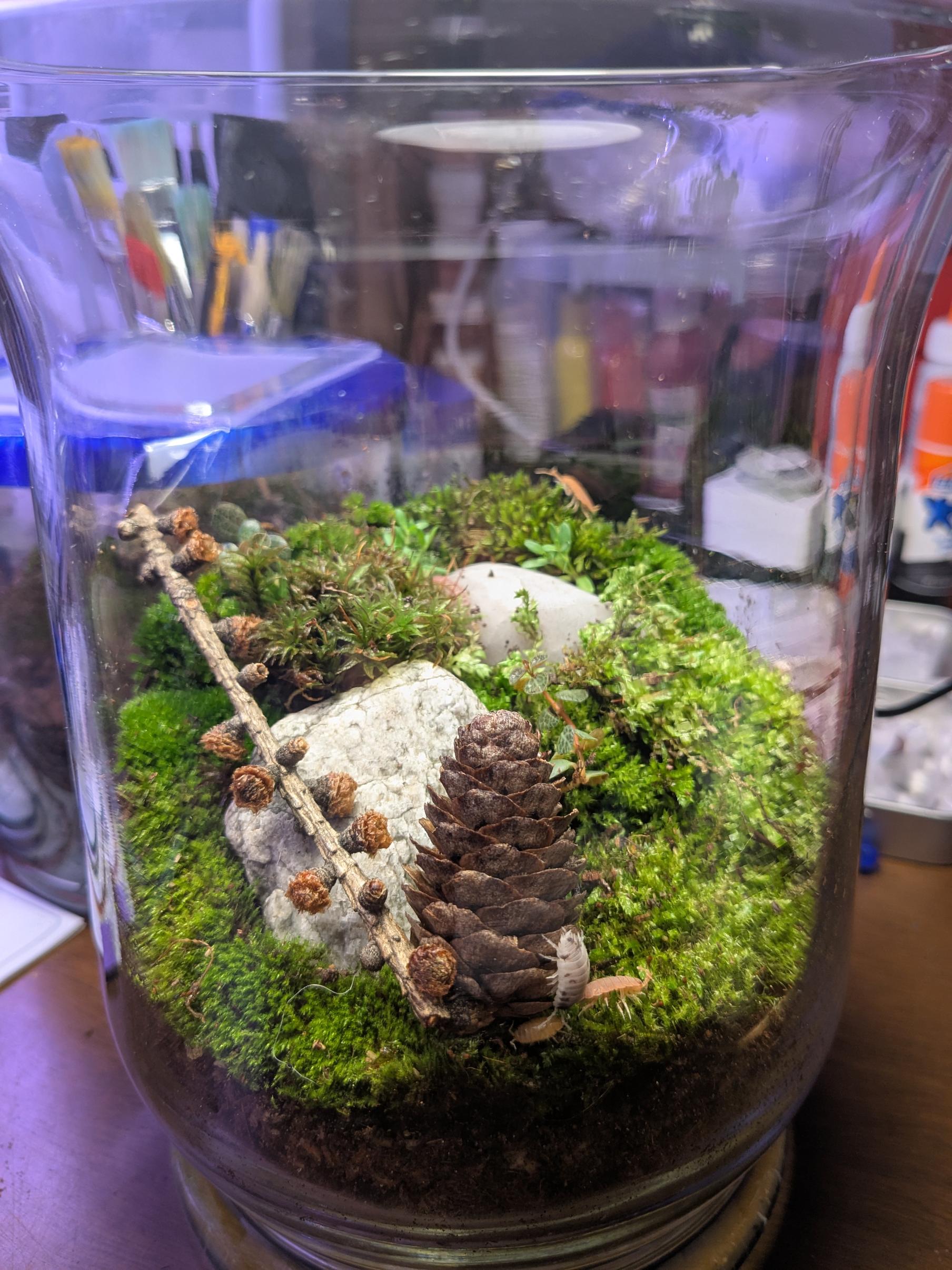
You don’t really need to worry about them escaping, since they want to stay in their nice little environment, and can’t seem to climb the glass at all anyway.
A calcium feast
Okay one last thing, I promise. I read that apparently you should have some source of calcium for your detritivores, since they actually shed their carapaces and need calcium to build the new ones.
In fact, I noticed an empty shell just the other day:
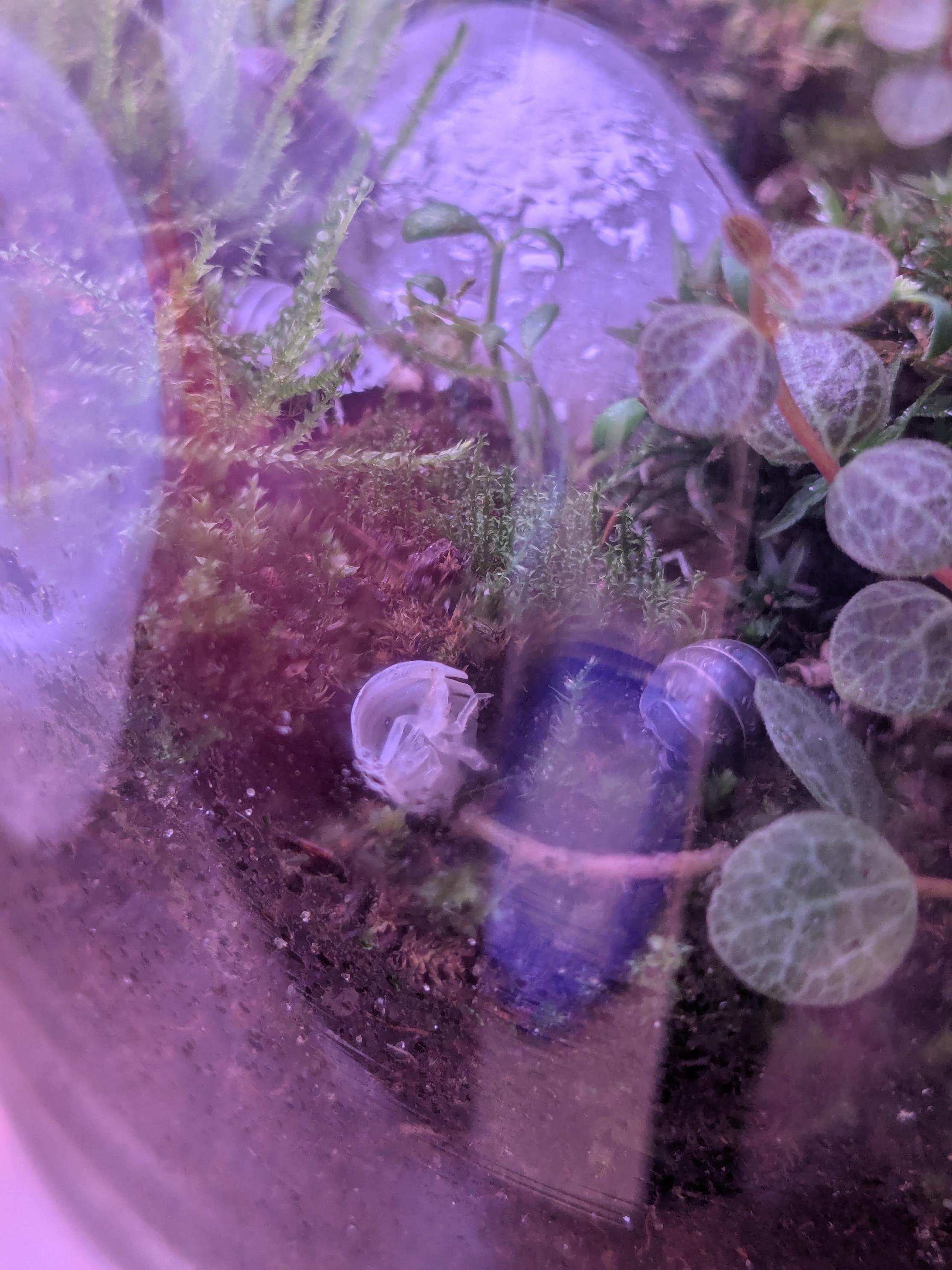
and, I saw some of them nibbling at it, and it looks like it’s almost gone now.
I don’t think any of the things I added when creating the terrarium have much easily available natural calcium, so I thought I’d try adding some. Regular chalkboard chalk is calcium carbonate, so I shaved some off with a blade and dumped a bit in each terrarium.
And they immediately went hog wild! Each coming out to feast:
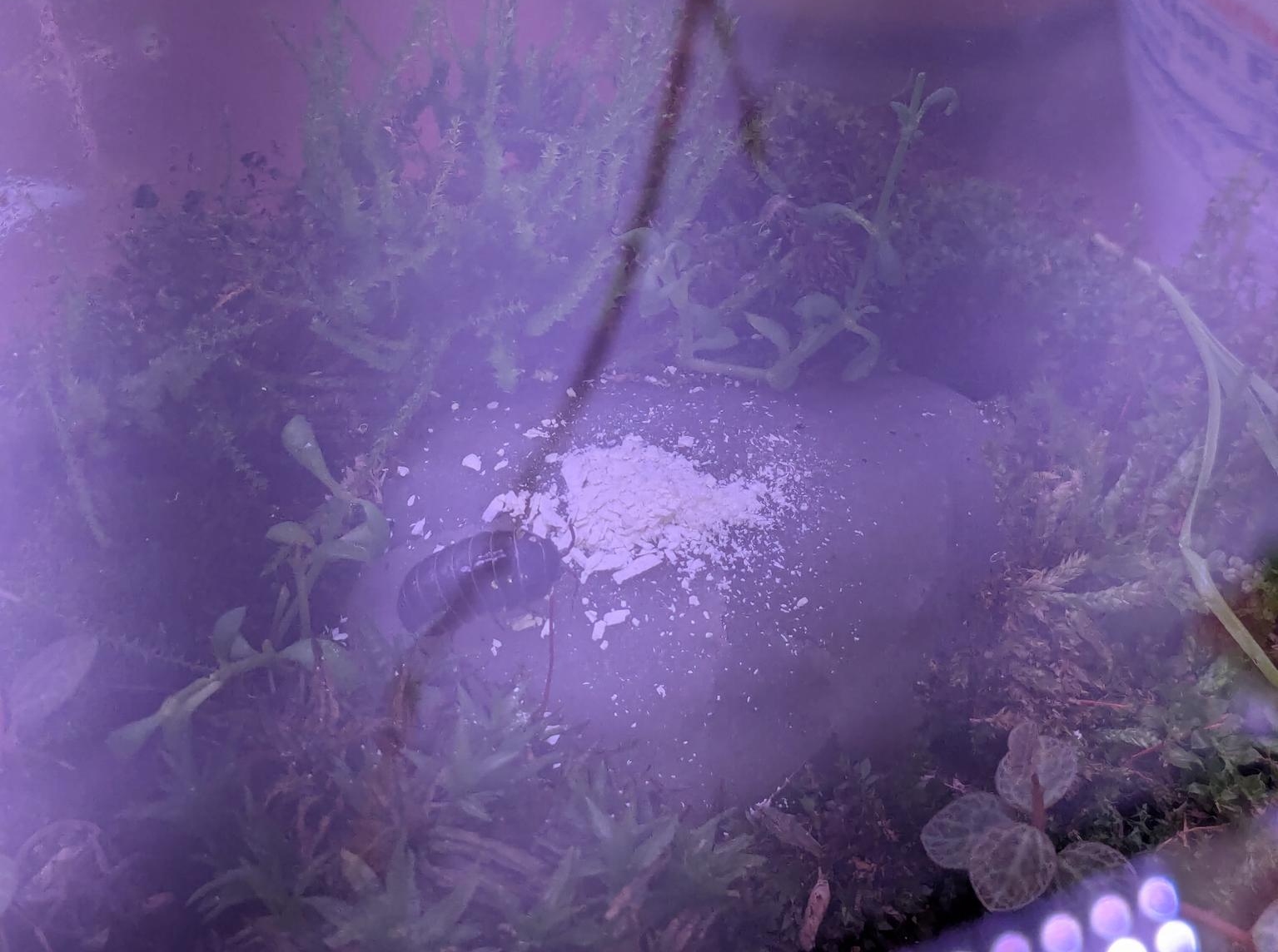
Even the centipede I found wanted some!
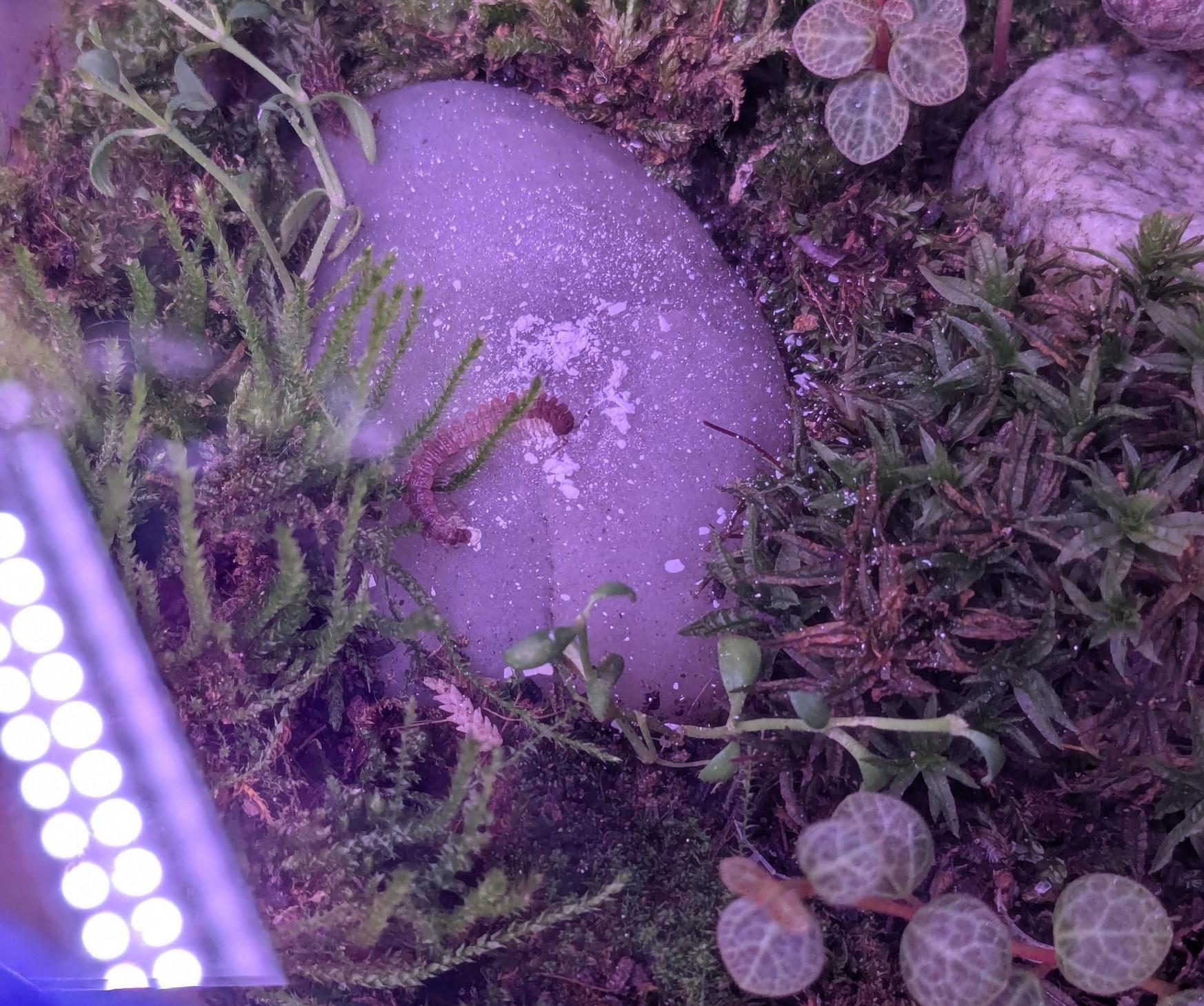
You can see that they really ate pretty much the whole pile!
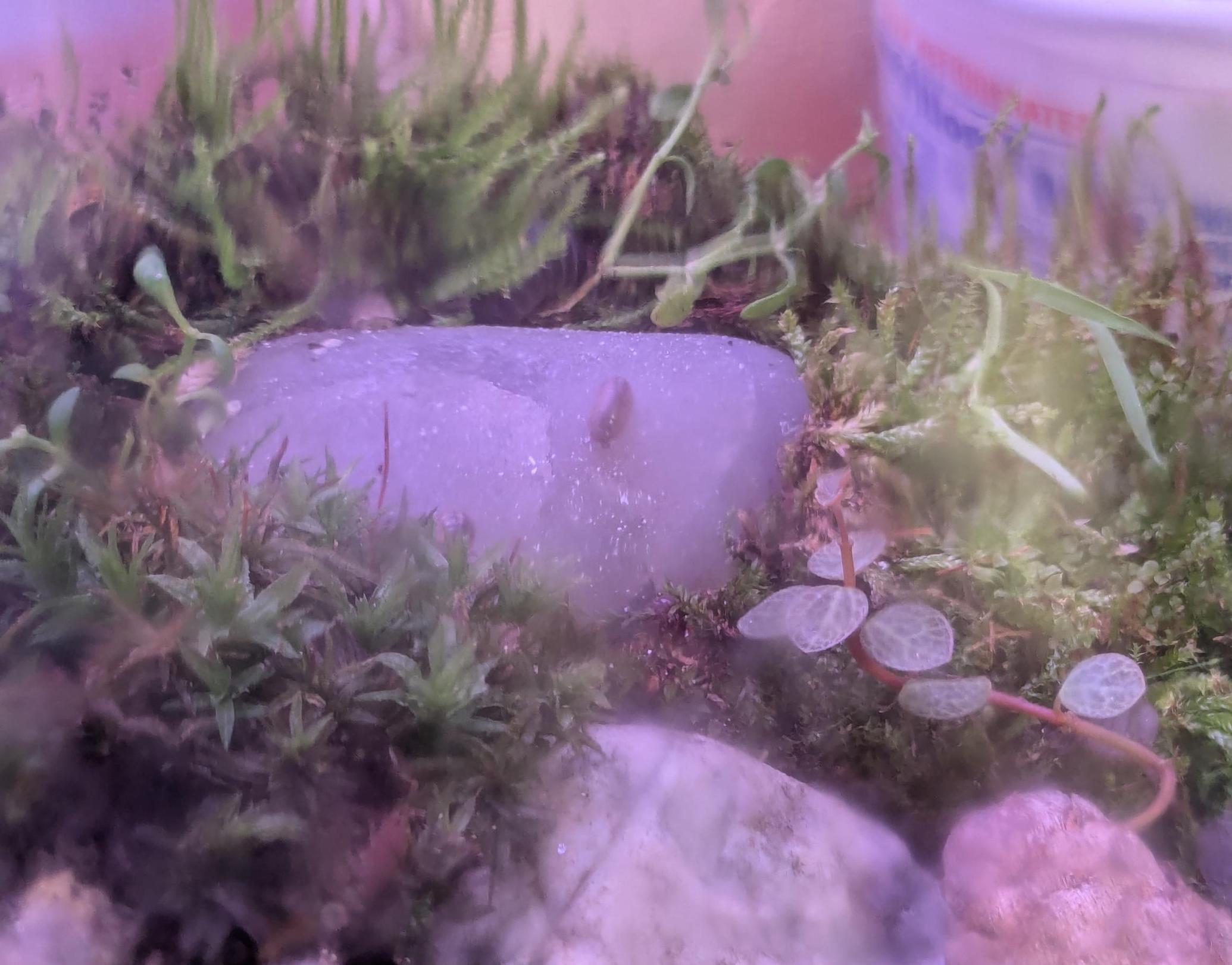
(I’m pretty sure that’s a baby isopod that was born in this terrarium!)
So, clearly they were calcium-hungry. It seems like probably a good move just to sprinkle some on top of the substrate when making it in the first place?
Anyway, that’s all for now. It was tons of fun, I’ll definitely be making another in the future. “Real” animals like frogs/etc seem like too much trouble, but it’d be cool to have it be a bit bigger so I can fit some different plants in there.
Links
Here are a few terrarium youtubers whose videos were really helpful: